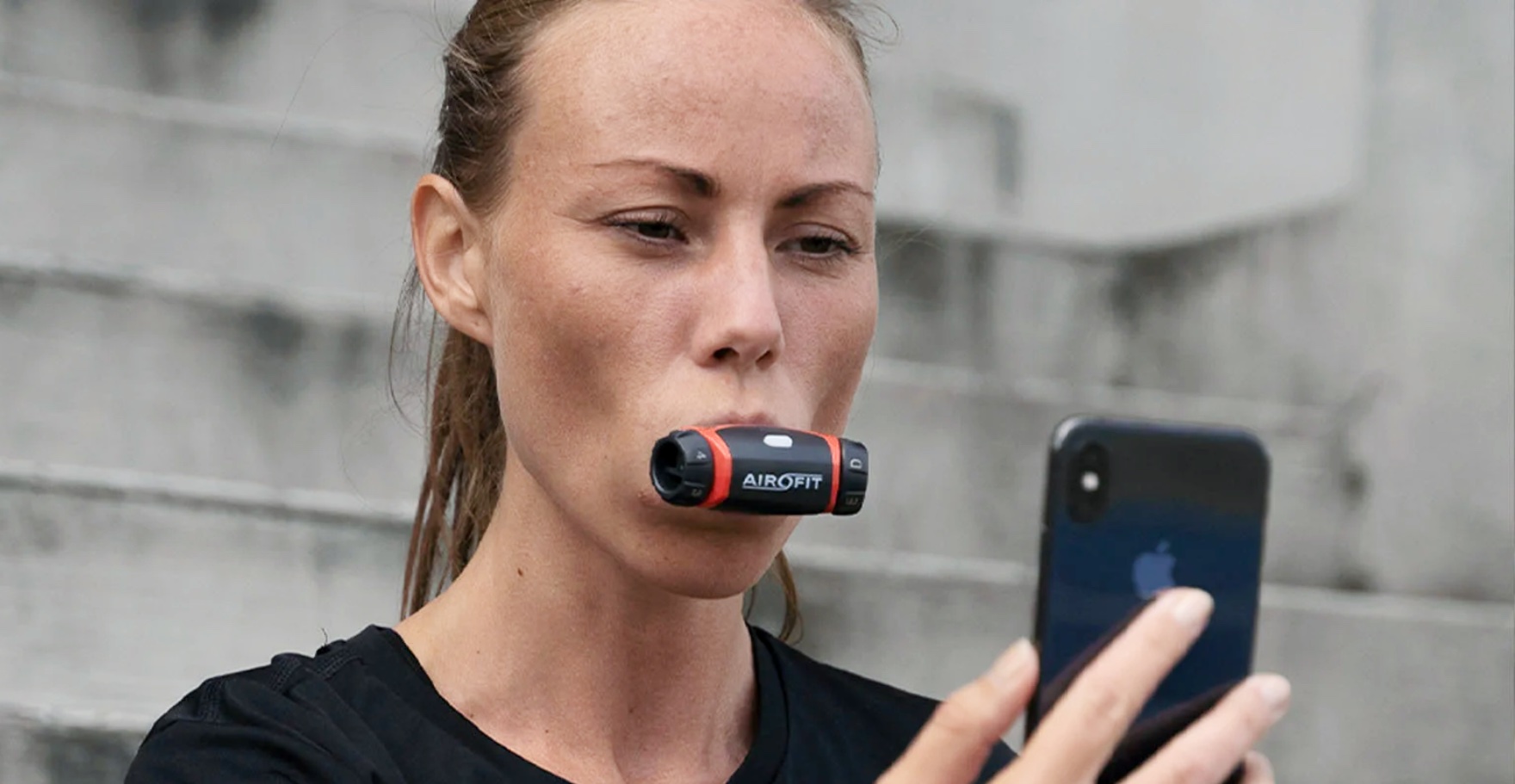
If you fancy yourself a fitness tech guru, you might already know or even use a Respiratory Muscle Training (RMT) device to improve your breathing. But if you’re a novice, here’s what I’ve learned from using one for two weeks.
The Airofit PRO 2.0 RMT device is a smart respiratory training system with proven benefits like improving athletic performance, physical recovery, mental health, and sleep. Given that I am a long-suffering asthmatic and subject to seasonal hay fever, I was keen to try this handy virtual breathing coach.
If you’re looking for more ways to improve your breathing and boost exercise performance, an RMT device might help, along with the best fitness trackers. But what did I learn from using one for two weeks? Read on to find out.
What is Respiratory Muscle Training (RMT)?
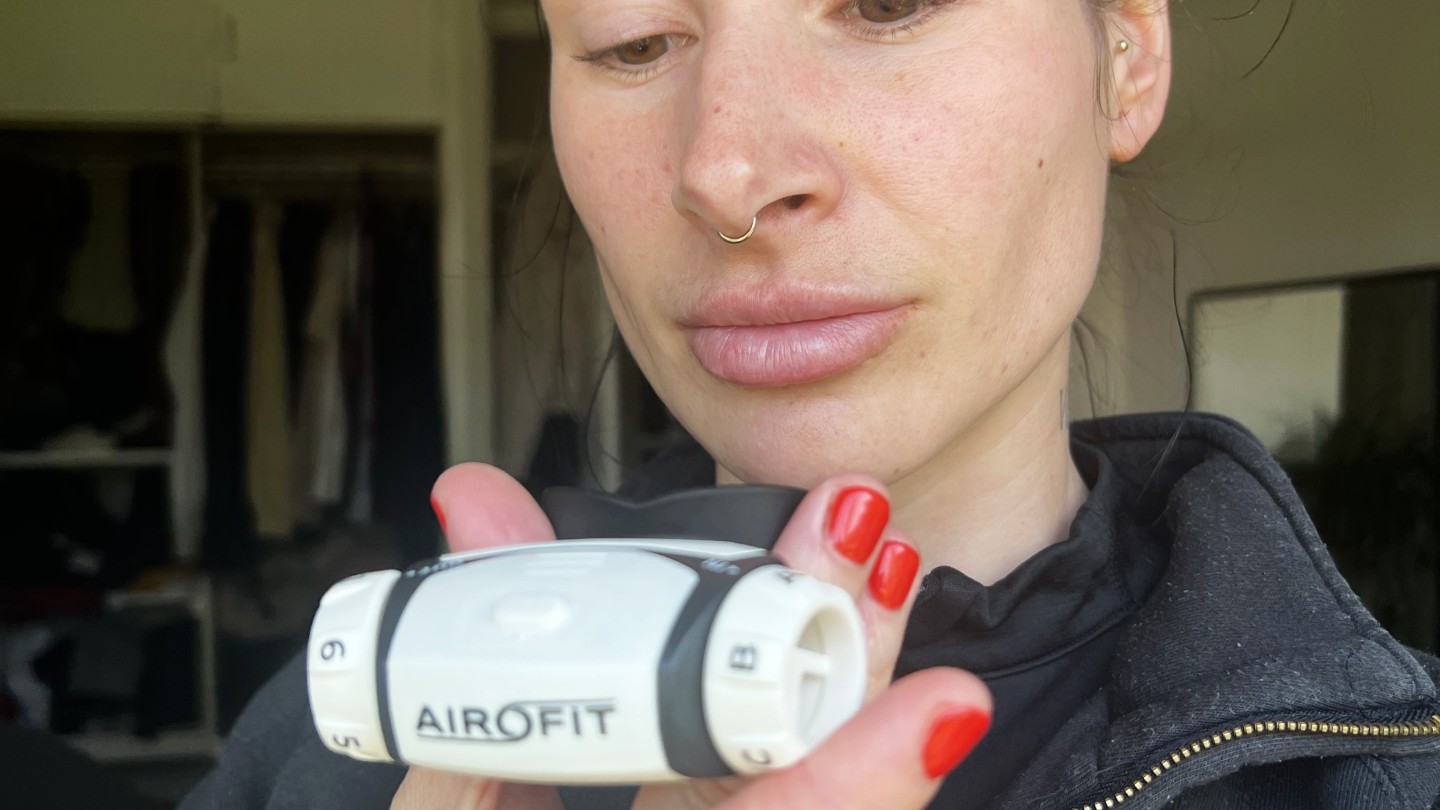
RMT is a breathing technique used to improve how your respiratory muscles work. Inspiratory Muscle Training (IMT) focuses on improving inspiratory muscle strength (your inhalation quality), and Exhalation Muscle Training (EMT) improves exhalation quality.
In the same way, you would exercise skeletal muscles frequently in the gym (your legs or biceps, for example), you can train your respiratory muscles through a series of daily breathing exercises. RMT is used by people with respiratory problems like asthma or COPD, but it has also become a staple for sports and exercise performing, as backed by research.
Benefits of using an RMT device include improved endurance and lung strength, greater lung capacity, and reduced fatigue using various resistance settings to test strength and flexibility.
I used a RMT Device for 14 days to improve workouts — here's my verdict
The Airofit PRO 2.0 is a virtual breathing coach that promises to train my breathing muscles, including the diaphragm and intercostals, but did I notice any results?
Sign up to get the BEST of Tom's Guide direct to your inbox.
Get instant access to breaking news, the hottest reviews, great deals and helpful tips.
1. It's quick and easy
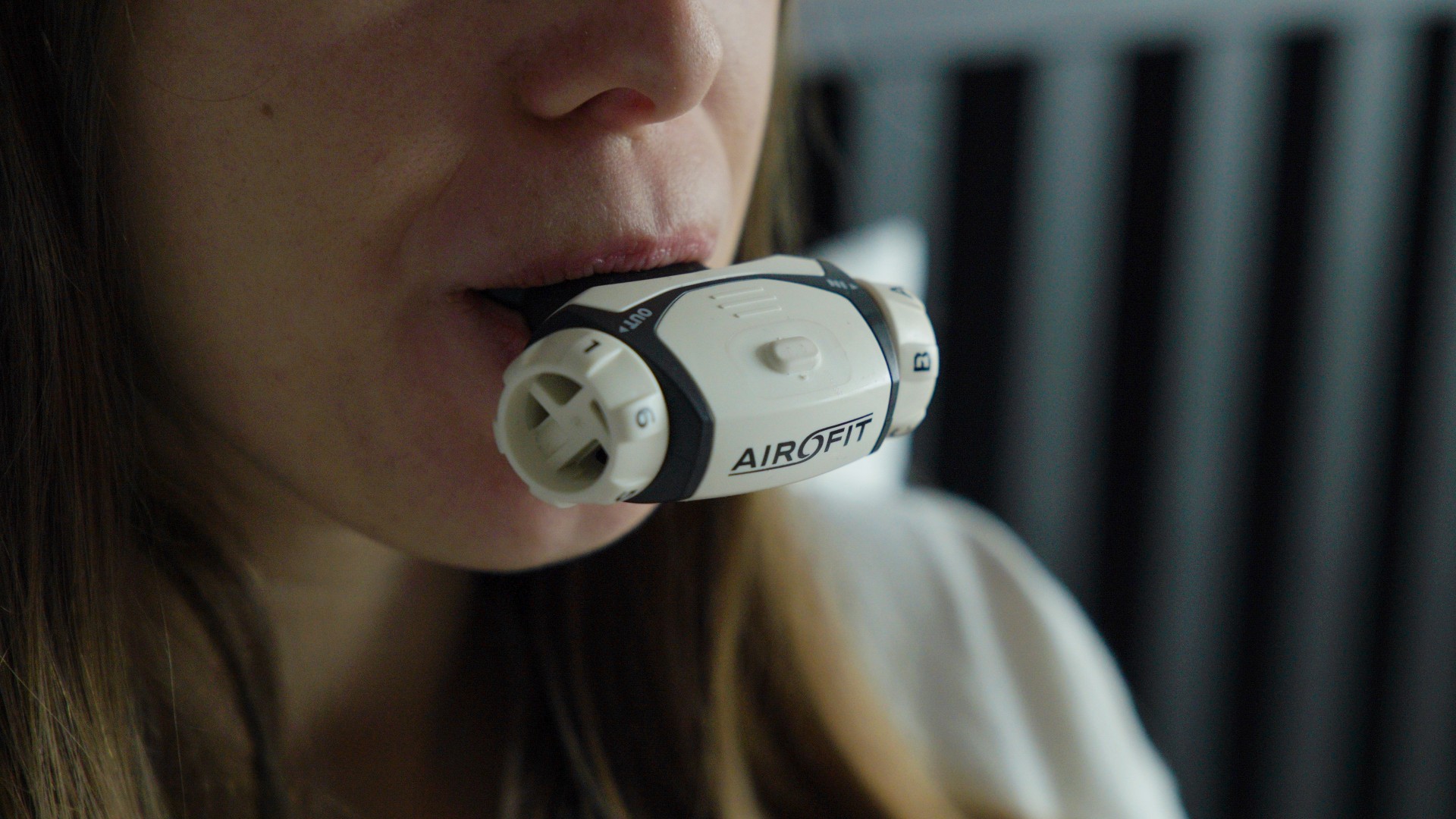
The best time to use it is first thing in the morning or before bed (this bedtime yoga routine pairs well with it), and thankfully, it’s easy and quick to use. Airofit says that via resistance, you can train your breathing muscles ‘just like any other muscle group.’ This device was about to take my diaphragm to the gym.
The device is small with a detachable rubber mouthpiece, with dials on either side that control resistance — and you simply breathe into it.
The device pairs with a downloadable app and only takes two initial lung tests to get set up. You’ll be tested against your maximal inspiratory pressure — the amount of pressure you can produce against a high resistance level, maximal expiratory pressure (the same, but for exhaling), and volume — the total amount of air in liters that you can exhale, over a threshold. Essentially, it measures the current strength and capacity of your muscles.
There is a range of RMT devices, but this one retails at $349 with a $40/year membership if you want to set specific goals (otherwise, it’s free to use).
2. The tests were tougher than expected
Before testing started, I adjusted the resistance dials according to the in-app video. From here, I was guided through the lung tests. I found the pressure incredibly difficult to breathe against on the inhale and couldn’t believe how challenging it suddenly was.
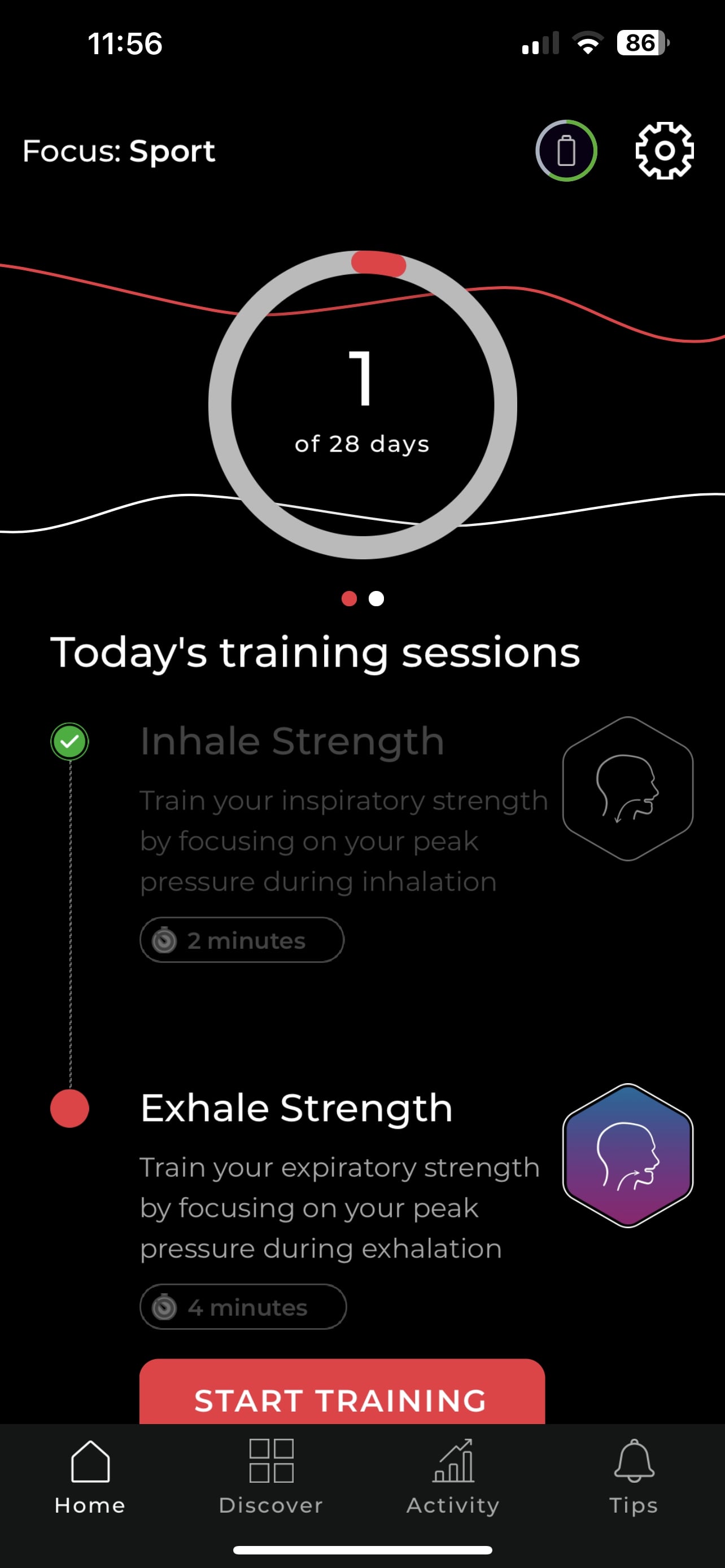
Interestingly, my overall volume was higher than predicted, but my inspiratory and expiratory results came back below par. So, work to do then.
3. It takes commitment
After testing, I had full access to the 28-day breathing program, using daily inhale strength training (two minutes) to test peak pressure, muscle flexibility training (four minutes), and whichever programs I fancied in the Discover tab. Six minutes isn’t long, and you’re guided through each session, but I still found it boring and found myself clock-watching — a lot.
I plan to test for the full 28 days, but I’m interested to know what the halfway point would look like; I was struggling to commit by day three.
4. I found inhaling the hardest
The inhalation strength testing was hard work, and I felt puffed after. I’ve been asthmatic since birth but haven’t had an asthma attack or needed my inhaler since my teens, and I didn’t realize how much it had impacted my overall capacity. Suddenly, I was on the back foot.
Throughout sessions, you must find a tall posture to encourage expansive and diaphragmatic breathing, allowing your stomach to expand and fall, rather than breathing into your chest, which I do without realizing. I noticed myself hitting peak inhalation very early and couldn’t control my breath in time with the app. Even after seven days, I was still struggling.
5. It was meditative
Training my diaphragm with control taught me to breathe deeply, and my breath rate began to slow, as well as my heart rate. In the ‘Discover’ tab, I could access a library of breathing exercises focusing on different goals and breathing patterns, including sports performance or relaxation.
I’ve been using the Circle training for respiratory control using a circular breathing pattern (I need this for yoga) and Diamond training, which uses triangular breathing to improve your anaerobic threshold (for CrossFit training). At first, I felt dizzy, but — with practice — I began feeling deeply calm. After every session, I went into the day noticeably relaxed with more clarity.
Many studies show that breathwork helps shift your nervous system from the sympathetic to parasympathetic, which calms, restores, and repairs the body, boosts sleep, and reduces stress. These breathing patterns were developed with various medical doctors, performance coaches, physiotherapists, and Olympians, so I felt in safe hands.
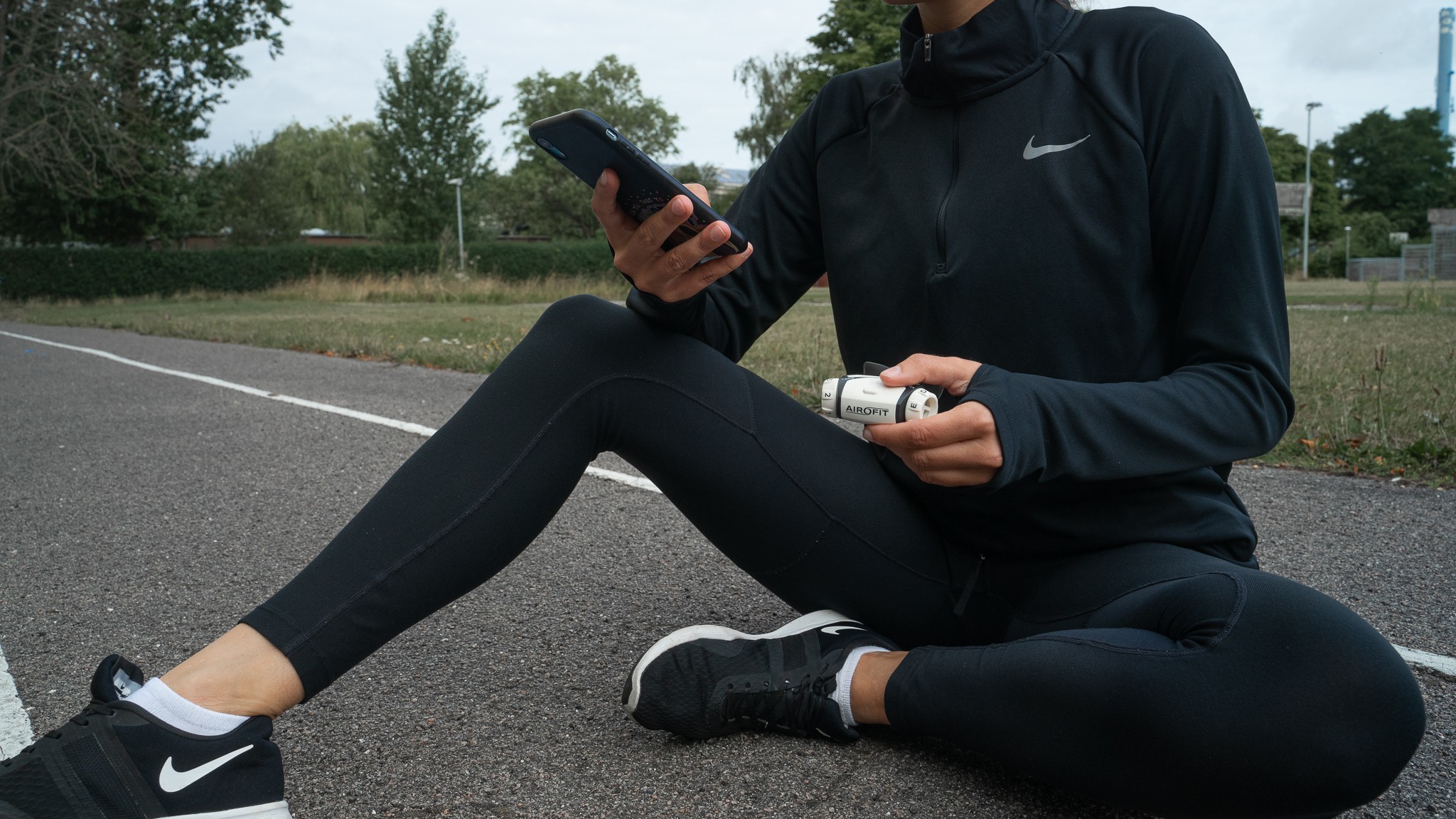
6. I noticed some change
The app tracks sessions and progress by day, harboring consistency and helping me keep on top of any improvements, which were frustratingly slow by day 10. You should be consistent with breathing training — like going to the gym. In doing so, you could expect structural changes to your muscle fibers, and improvements in power, maximal ability, and strength, according to various RMT studies.
Verdict
I’m 14 days into my 28 program and noticing incremental shifts toward improvement in my stats, although nothing dramatic. I have restricted inhalation and struggle to take deep breaths, and 14 days in, I’m noticing slightly longer inhales and more controlled breathing.
During my hot yoga classes, I’m finding it easier to connect and move with my breath with more space to breathe. I’m also feeling noticeably calmer and more connected going into my day, but no notable differences during my regular training regime — yet. Here’s to the next 14 days.
More from Tom's Guide

Sam Hopes is a level 3 qualified trainer, level 2 reiki practitioner and senior fitness writer at Tom's Guide. She is also currently undertaking her Yoga For Athletes training course. Sam has written for various fitness brands and websites over the years and has experience across brands at Future such as Live Science, Fit&Well, Coach, and T3.
Having worked with fitness studios like F45 and Virgin Active, Sam now primarily teaches outdoor bootcamps, bodyweight, calisthenics and kettlebells. She also coaches mobility and stretching-focused classes several times a week and believes that true strength comes from a holistic approach to training your body.
Sam has completed two mixed doubles Hyrox competitions in London and the Netherlands and finished her first doubles attempt in 1:11.
